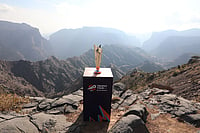The Spanish Island of Tenerife in the Canary Islands archipelago is currently facing a disastrous bout of forest fires that have already engulfed 1,800 hectares of the island. The wildfires have also prompted the evacuation of five villages on the island and forced road closures. A massive effort to battle the blaze is underway, mobilizing 250 firefighters and several planes and helicopters.
The villages of Arrate, Chivisaya, Media Montana, Ajafona, and Las Lagunetas were evacuated yesterday to protect civilians from the blaze and smoke.
As wildfires continue to rage on the Spanish island of Tenerife, a closer look at the island's landscape and features reveals its unique appeal as well as the challenges it faces. The affected island of Tenerife is a top tourist destination in Spain. It is the largest of the Canary Islands, situated in the eastern Atlantic Ocean off the coast of Africa. The island possesses great diversity in geography, ranging from desert landscapes to green mountains and breathtaking seascapes.
Its iconic Mount Teide, a dormant volcano and Spain's highest peak, stands as the centerpiece, surrounded by a national park that attracts hikers and nature enthusiasts. Due to the wildfires, access to Mount Teide has been shut down.
Tenerife is regarded as the "island of eternal spring. The trade winds assist the island in maintaining a perfect temperature and create 'A Sea of Clouds,' a natural phenomenon in which clouds gently push against the hilltops, causing air moisture to condense. The rich culture of Tenerife has been heavily influenced by Spain and the Guanches (the indigenous group who originally inhabited the island). Additionally, historical influences from Europe, Africa, and the Latin Americas have shaped the island's towns, villages, and festivals. This fusion is particularly evident in the island's architecture, cuisine, and local traditions. Tenerife also hosts the world's second-largest carnival celebration in terms of magnitude and spectacle, trailing only Rio de Janeiro. The 14-day celebration attracts visitors from all over the world.
The arid environment of Tenerife, on the other hand, is a cause of concern for the island. The current wildfires have highlighted the island's susceptibility to similar tragedies. During the warmer summers, dry conditions produce a climate that makes the island prone to wildfires, which can spread quickly across the woodlands and ravines.
























